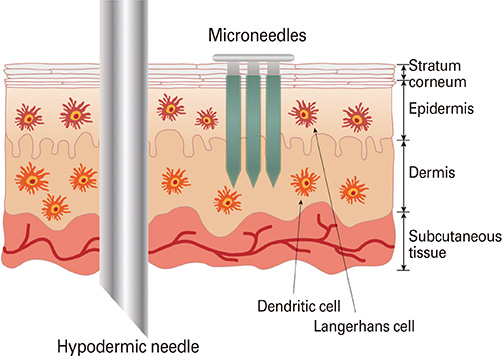Just weeks after Newcastle University researchers made headlines for their world-first 3D printed corneas, it appears a team at Washington State University (WSU) has also been keeping its eye on 3D printing’s potential in making medical treatments for the visually impaired.
After receiving an 18 month exploratory research grant, WSU researchers have created a kind of 3D printed contact lens that could be used as a cheaper alternative to laser eye surgery.
Alternative eye therapies needed
According to recent estimates from the U.S. National Eye Institute (NEI) over 35 million people in America were affected by age related eye disease in 2010. By 2050, the institute expects this figure to double.
Diabetic retinopathy, which will affect around one third of world’s diabetics in their lifetime, is one example of such diseases. In people aged 65 and over, the condition affected around 7.7 million people in 2010.

Introducing: microneedle arrays
It is always challenging to treat such delicate conditions. At WSU, researchers propose a direct treatment method using microneedle arrays.
A technology that has been around in medicine for some time, microneedle arrays have been proven as an effective means of controlling drug delivery into the body.
Unlike a hypodermic needle, microneedles create small, shallow invasions in the skin. As an array, in this case of around 25, the microneedles are created to gradually deliver drugs into the body over an extended period of time. Treatment this way improves drug effectiveness, and reduces the risk of side effects.

Controlled drug delivery
WSU researchers propose to make their eye microneedle arrays using 3D printing, meaning that each one could, in effect, be custom-made for specific patients and conditions.
To achieve the fine resolution required for these devices, a vat photopolymerization technique, such as SLA, DLP or even nanolithography, is likely the best route of fabrication.
The plan is to apply the drug-loaded arrays directly to a patient’s eye. The microneedles would be left there potentially for up to a month. Then, thanks to the WSU assistant professor Kuen-Ren “Roland” Chen’s “locking” and “unlocking” technology, they would be removed afterwards causing minimal damage and discomfort.
For further updates on this research and more from across the sector subscribe to the 3D Printing Industry newsletter, follow us on Twitter, and like us on Facebook.
Search and post 3D Printing Jobs here.
Featured image shows a 3D printed prototype of a programmable microneedle array for the eye. Photo via WSU


